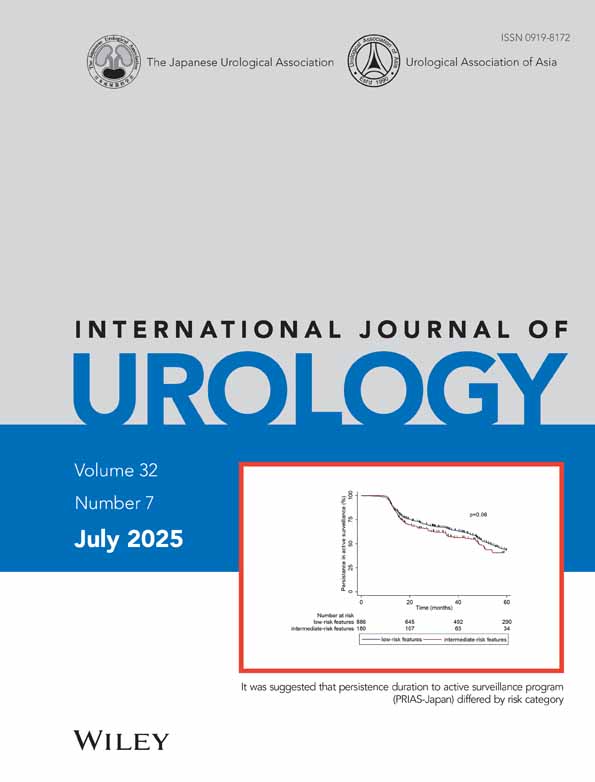Prostate-Specific Antigen Levels from a Mass Screening Program Using Highly Sensitive RIA Kits
Abstract
Background This study was designed to evaluate the distribution of prostate-specific antigen (PSA) levels of men in a mass screening program for prostatic disease.
Methods A total of 763 men over 40 years of age underwent mass screening for prostatic disease in a Japanese prefecture using the highly sensitive Eiken kit and the Hybritech (Tandem-R) kit. The screening tests consisted of serum PSA determination, digital rectal examination, a questionnaire on symptoms, evaluation of prostate volume, and determination of the obesity rate.
Results Serum PSA levels of all subjects were measured with both kits. The correlation between the values obtained by the Eiken kit and those of the Tandem-R kit was high (r = 0.990), but the values of the former were slightly higher than those of the latter. Serum PSA weakly correlated with age, however, when estimated within decade age brackets, the levels of PSA showed significant differences among only 1 pair of groups stratified by age. In contrast, the levels of PSA showed significant differences among 9 pairs of groups stratified by prostate volume.
Conclusion A highly sensitive assay kit is useful to evaluate both the distribution of PSA levels and the relationship of PSA values to age and prostate volume of men in mass screening programs for prostatic disease, since approximately 40% of the subjects who underwent the present mass screening showed PSA values under 1 .Ong/mL, which have been the the lower limit of detection of many PSA kits.




